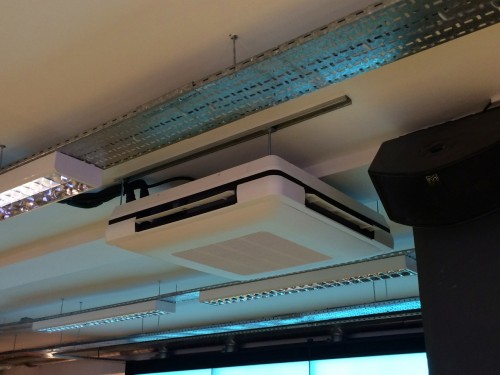
There’s been significant focus on making air-con more efficient, environmentally friendly and cost-effective over the years and lots of progress has been made. Here at Air Options, when we install air-conditioning systems, we concentrate on peak usage, areas to be heated or cooled and energy efficiency. This means that we take the specific requirements of your facilities into account and ensure that they’re cost effective and as energy efficient as possible.All of the systems we install are registered with the Environment Agency too and you can find out more about our Environmental Policy, which is at the forefront of everything we do. We keep ourselves updated with the latest advancements and are always interested with industry progress that can benefit our customers. One of the key advancements that we’re predicted is electricity-free air-con, but what would that involve?
While electricity-free air conditioning is still far away, it’s an idea that’s being thought about more in technological circles, as it is in many other sectors such as the automobile industry. Aaswath Raman, of Stanford University, has come up with a proposition that we’re going to explore a bit more of, as it may pave the way for big advances in the air-conditioning industry. Most of the electricity needed in air-con systems is to make the pumps and compressors function effectively, but Dr Raman has come up with an idea for how buildings can dump their heat without them. Essentially, it involves radiating heat into outer space. It sounds like a grand idea, but it’s relatively simple in practice.
Space is very cold, so Dr Raman has purported that if buildings can reflect the sunlight which falls on them back into space then it can dump the heat and promote radiative cooling. He’s produced a material made from four layers of silicon dioxide and three of hafnium dioxide, which can reflect 97% of sunlight by being backed with a mirror of silver 200 nanometres thick that acts as a semi-conductor. Dr Raman and his team are a long way away from making an air-conditioning unit that uses this type of material to its advantage, but on a smaller scale they have created an experiment that can cool its surroundings. The challenge is to apply these scientific findings and produce a device that is cost-effective, so they will have to substitute silver and hafnium dioxide. They also need to create a device to scale and make it applicable to rooftops.
These findings won’t be replacing air-conditioning units anytime soon, but they could help to decrease electricity use and make cooling systems even more energy efficient than they are already, even if it is only by a small proportion. Dr Raman’s findings show the direction that cooling systems could go in and what type of advancements we should look out for in the future.
One thing is for certain, the systems that Air Options install all operate at optimum energy efficiency levels. Our engineers ensure that our systems maintain their energy efficient cooling and heat pump solutions and consistently meet current environmental regulations, legislation and the best practices.

